This is a Mercedes-Benz Unimog 416 Doka – “Doka” comes from the German word “doppelkabine” meaning double cab. The vast majority of Unimogs have single cabs, so the Doka is a desirable variant as it allows you to accommodate five passengers instead of there usual two.
This Unimog has a slew of features that’ll come in handy off road, things like four-wheel drive (of course), portal axles, three locking differentials, a body lift, a Warn winch, and a turbocharged 5.7 liter OM352 diesel sending power back through a 20-speed manual transmission.
Fast Facts – The Mercedes-Benz Unimog 416 Doka
- The Unimog was developed in the years immediately after WWII by German company Boehringer, the name is an acronym of “UNIversal-MOtor-Gerät” – Gerät is the German word for a piece of equipment, like machine or apparatus.
- The design of the Unimog was intended to provide farmers with a tractor that could also function as a truck or automobile, the same exact philosophy was being used by engineers in Britain at the same time to develop the Land Rover Series I.
- The original track width of the Unimog was designed to be the same as two rows of potatoes in a field, so that the vehicle could be used for plowing.
- The Unimog has remained in production since 1948 over a slew of model variations, and from 1951 onwards it was brought under the Mercedes-Benz brand.
The Mercedes-Benz Unimog 416
The Mercedes-Benz Unimog 416 was introduced in 1965 as the first long wheelbase variant of the popular Unimog 406. This longer wheelbase allowed the 416 to serve a multitude of roles from military and construction use to deployments in the service of park rangers, rural fire departments, and search and rescue operations.
Above Image: This short film from Daimler Trucks tells there story of the Unimog, from the earliest designs to the modern day.
Mercedes-Benz would keep the 406 family in production from 1963 until 1989, a remarkable 26 year production run. A slew of iterations and upgrades were introduced over the course of production of course, and many of them are still operational to this day.
As with essentially all Unimogs, the 416 is powered by a Mercedes-Benz diesel engine sending power back through a manual gearbox to the front and rear differentials.
Unimogs are famous for the fact that they have portal axles, essentially live axles with geared hubs that allow the axle to be located much higher offering more ground clearance.
A number of different cab options were offered including cabrio (open top), single cab, and of course the “doka” double cab.
A wide range of aftermarket conversions have been offered for the 406 and 416 Unimogs including bulldozer front ends, and backhoe rear ends for construction in hard to reach locales.
The Unimog 416 Doka Shown Here
The vehicle you see here is a Unimog 416 that benefits from a slew of upgrades applied over the years.
It now has “fast” axles, disc brakes, a body lift, a Warn winch up front and a custom front bumper, 20″ steel wheels, twin fuel tanks, a pickup truck bed with removable sides, stainless steel cargo boxes, LED driving lights, Corbeau racing seats up front, and a JVC CD stereo system.
Power is provided by a turbocharged 5.7 liter Mercedes-Benz OM352 diesel inline-six cylinder engine driving all four wheels through a 20-speed manual transmission, it has three locking differentials, and of course, portal axles front and back.
It’s currently being sold out of Utah on Bring A Trailer and you can visit the listing here if you’d like to read more about it or register to bid.
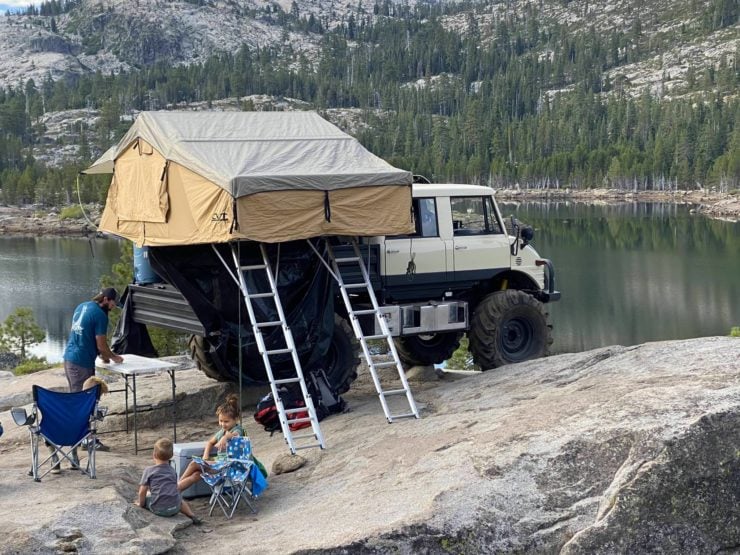
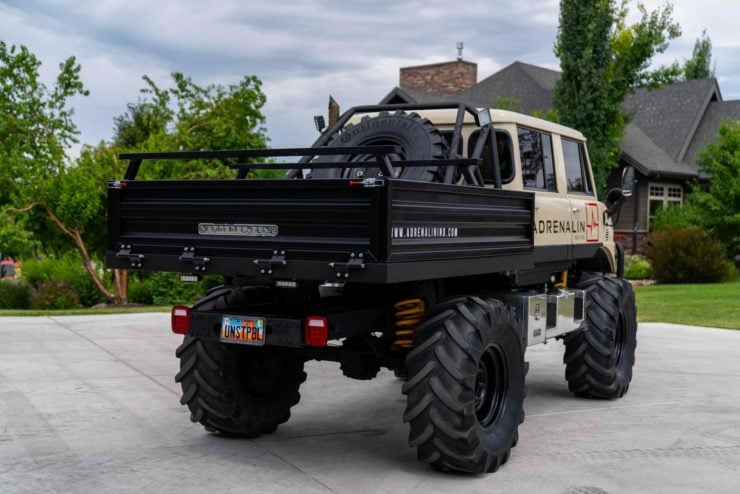
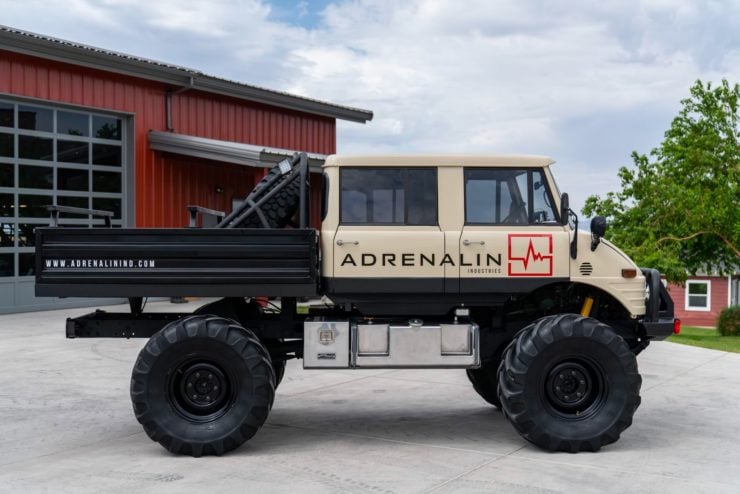
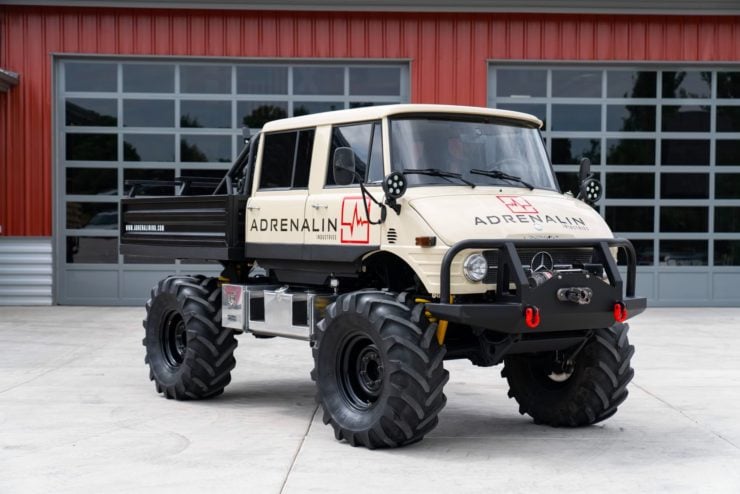
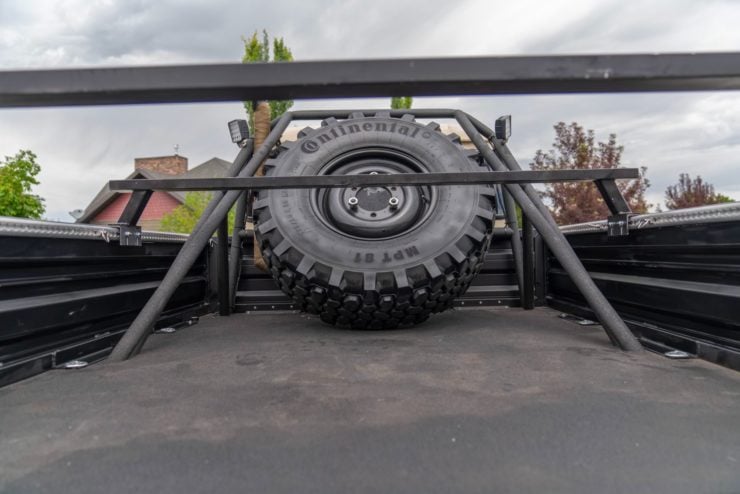
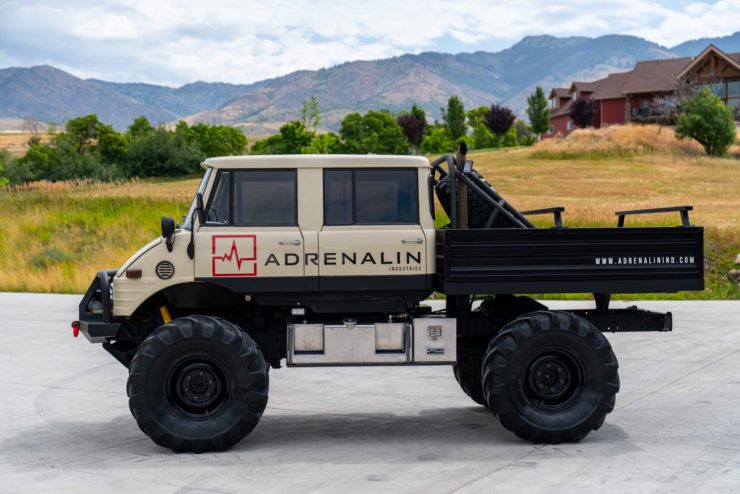
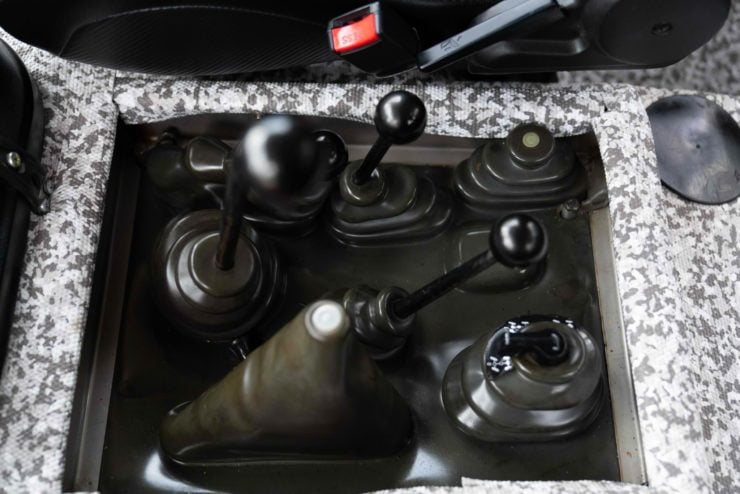
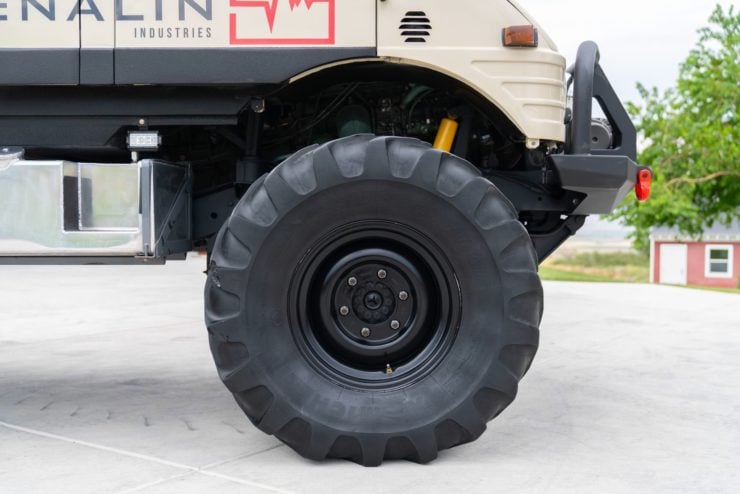
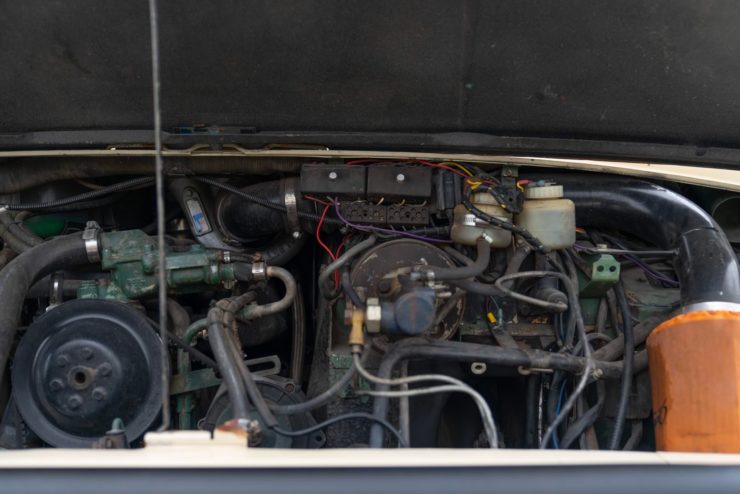
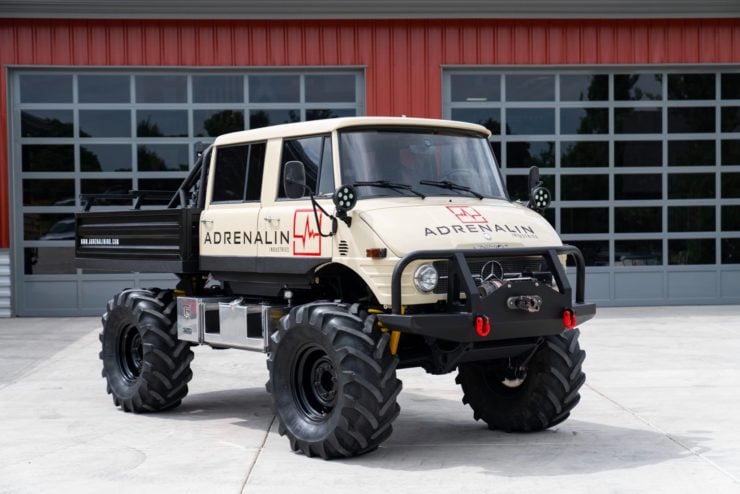
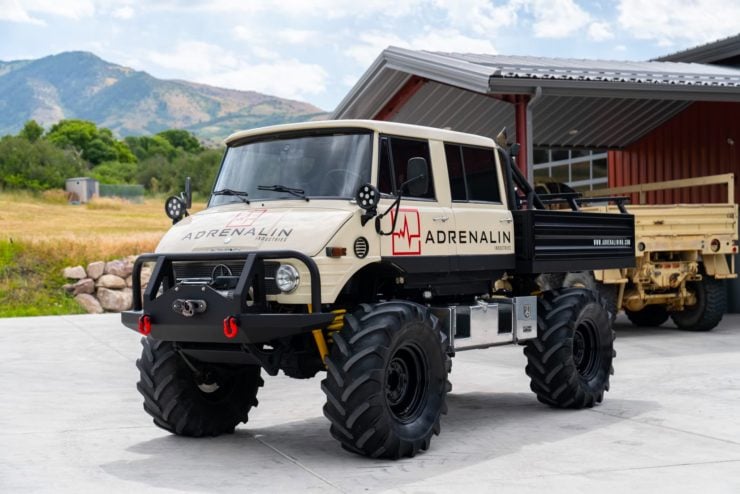

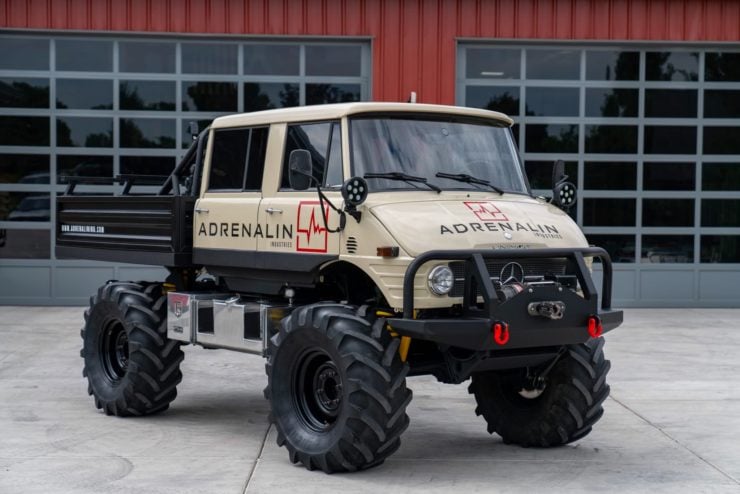
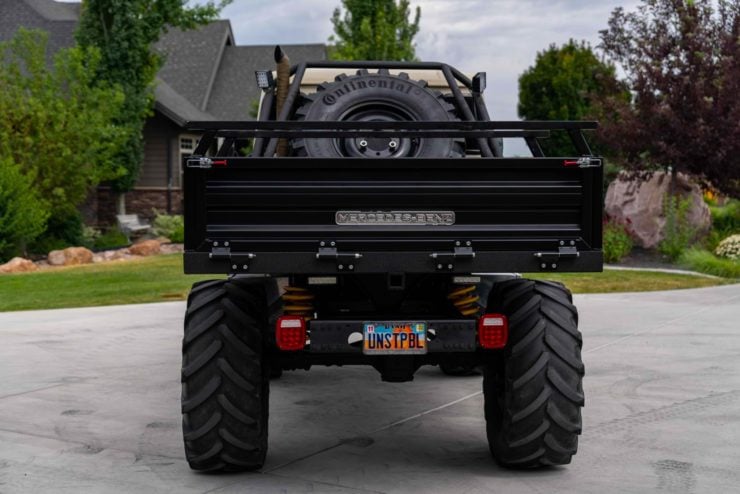
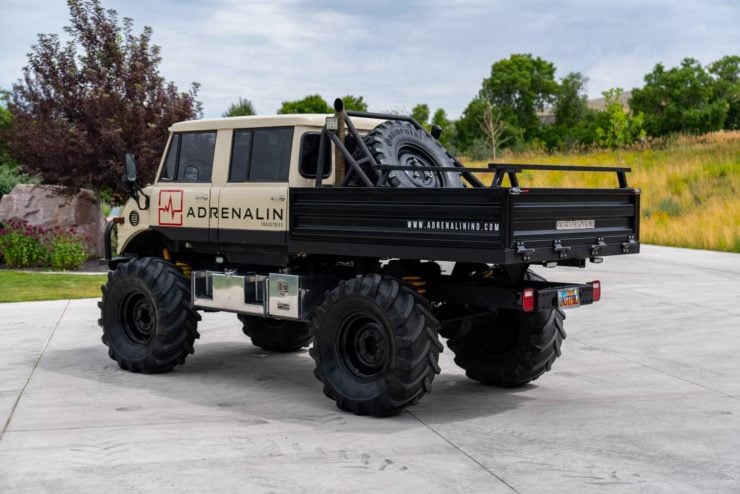
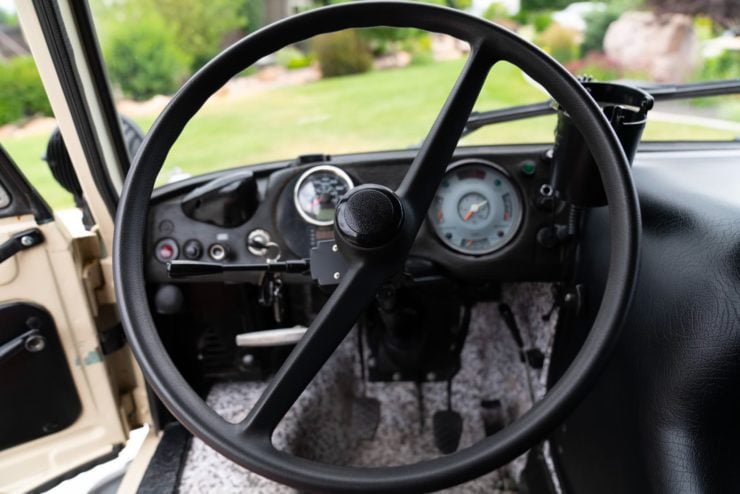
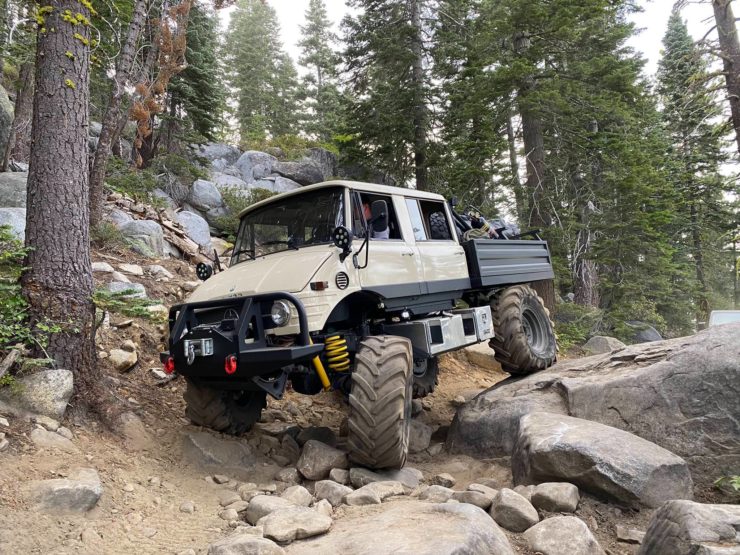

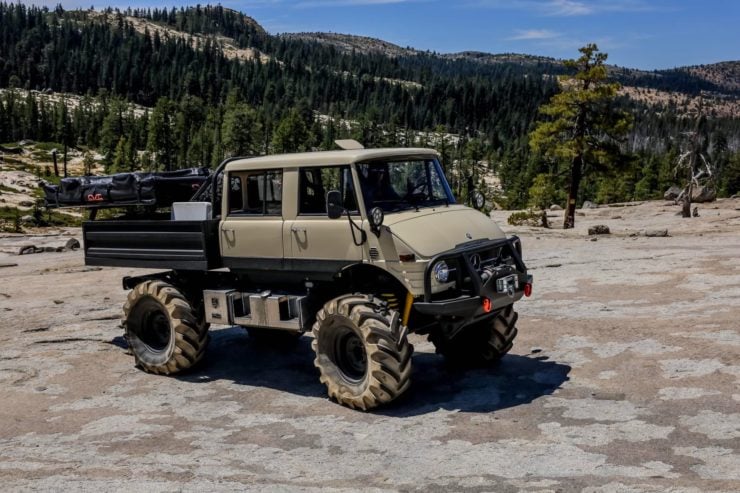
Images courtesy of Bring A Trailer
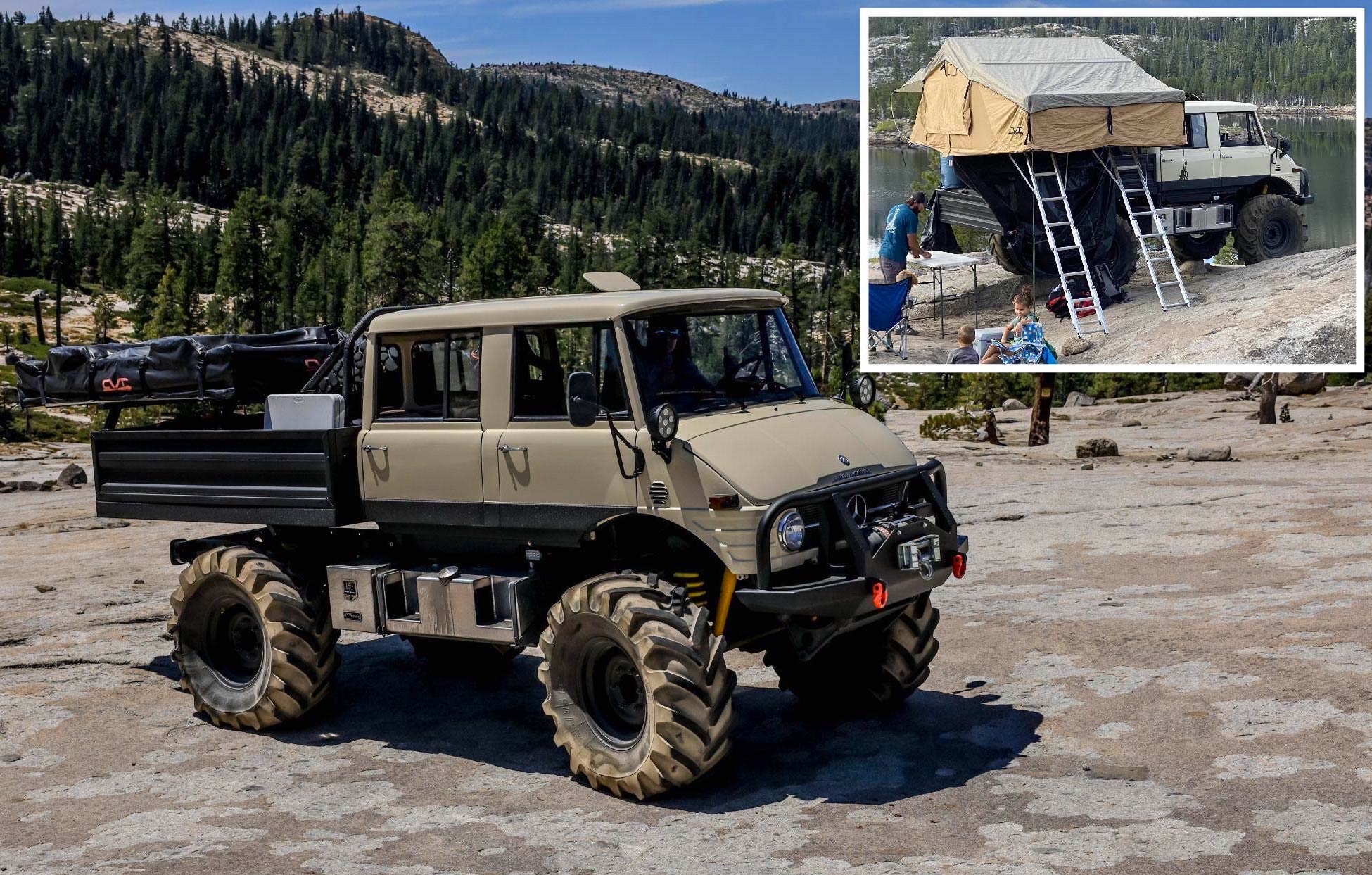
The post The King Of 4x4s: A Mercedes-Benz Unimog 416 Doka appeared first on Silodrome.
from Silodrome https://silodrome.com/mercedes-benz-unimog-416-doka/
via gqrds